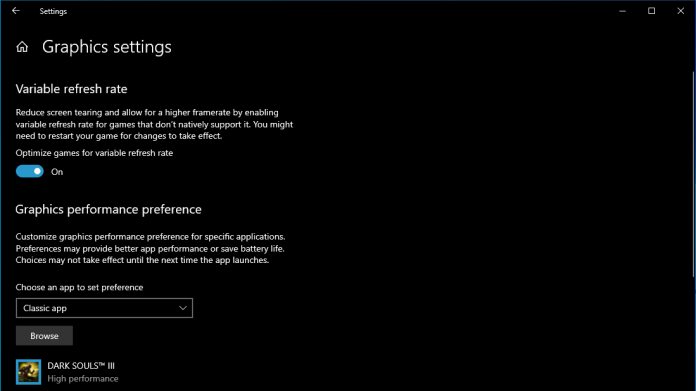Variable refresh monitors hold numerous advantages, but support can be spotty at times. Users like myself often see flickering in windowed games or others that fail to support it all. This is particularly prevalent in older titles, which debuted before the tech became popular.
With the Windows 10 May 2019 update, Microsoft finally appears to be doing its part to help. A new toggle under ‘Graphics Settings' lets users toggle support for variable refresh rate in games. This will ensure it functions correctly even in games without native support.
For the unfamiliar, variable refresh rate monitors are popular due to their ability to update more dynamically. Regular screens tend to update 60, 90, or 120 times a second (Hz), and nowhere in between.
In the case of a 60Hz monitor, a game running at a frame rate other than 60 or 30 is likely to experience screen tearing and other artifacts. It's also unlikely to look as smooth as variable refresh monitors, which can scale the number of times the monitor updates to match the application.
Patching its Mistakes
As Windows Store games didn't initially support adaptive sync, they're particularly likely to be missing the option. Drivers often force support for non-Windows Store titles, so it's Microsoft's platform this functionality is aimed at.
As a result, it could be argued this isn't necessarily a feature addition. Rather, it covers for Microsoft's previous missteps, and its lack of requirements for adaptive sync for titles to be sold on its store.
Either way, it'll be greatly appreciated for people like myself. As well as eliminating tearing, adaptive sync monitors can make titles feel smoother at lower frame rates. With hope, positive reception spur Microsoft to fix other UWP game issues, such lack of Fraps support and game backups.






